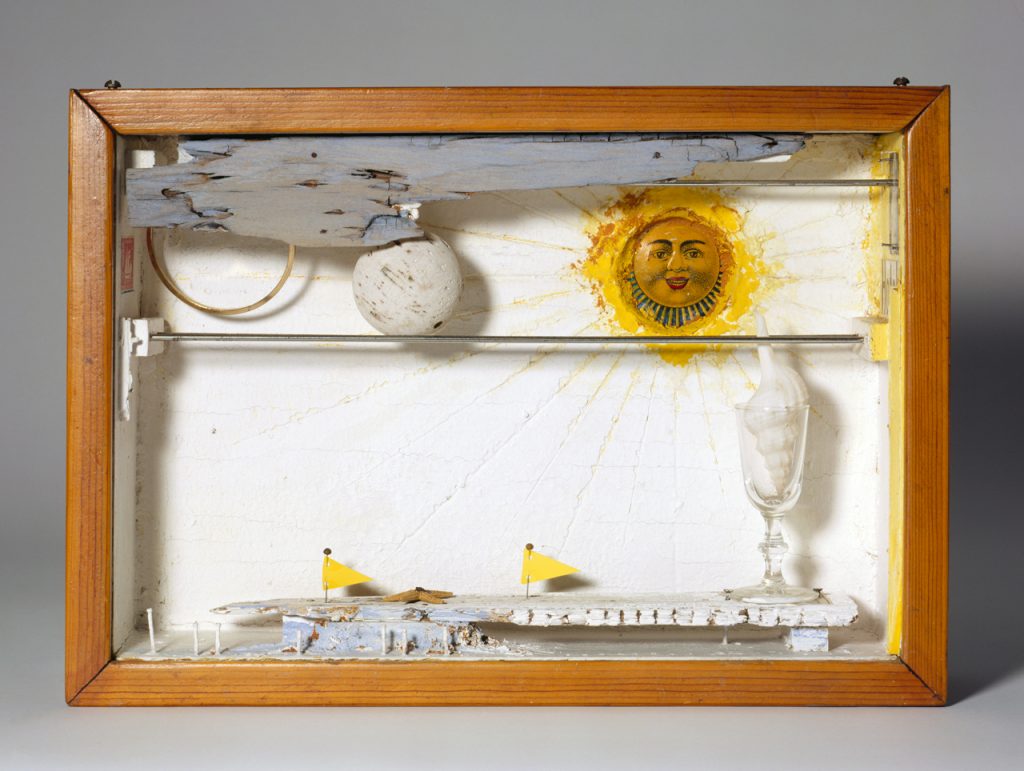Vocabulary
recycled
landscape
Materials
shoeboxes, cereal boxes, or other small boxes (collect in advance of project)
small found objects and recycled objects
natural objects to incorporate (leaves, sticks) *these could be collected by students in advance
nontoxic tacky glue
construction paper scraps in assorted “landscape” colors
cotton balls (for clouds)
Extension Activities for Teachers
- Begin a recycling station in the classroom. Designate a recycling captain to help keep the station organized.
- Encourage students to recycle at home and bring interesting objects to school to be used in art.
- Use tempera paint to paint the exterior and selected portions of the interior of the finished boxes.
Extension Activities for Families
- Set up scenes with your toys and have family members guess what is happening. Do the same thing using objects found around the house or from the recycling bin. What can you make out of things you find outside? What can a rock be? Or a twisty stick?
